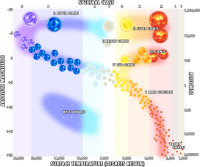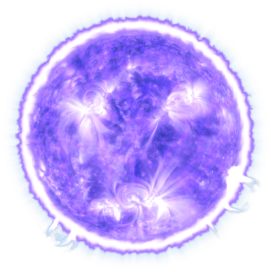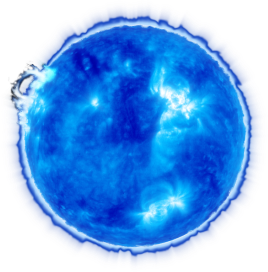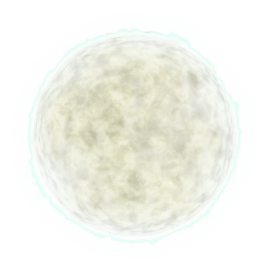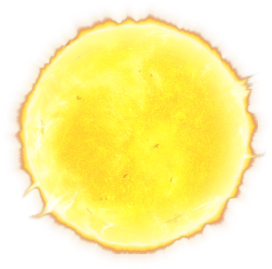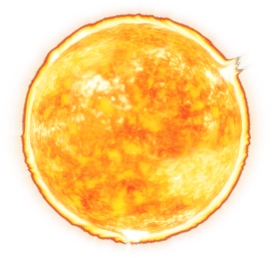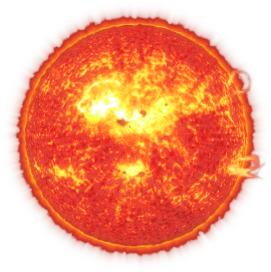Spectral Classification
From Star Trek: Theurgy Wiki
In astronomy, stellar classification is the classification of stars based on their spectral characteristics.
Most stars are currently classified under the Morgan–Keenan (MK) system using the letters O, B, A, F, G, K, and M, a sequence from the hottest (O type) to the coolest (M type). Each letter class is then subdivided using a numeric digit with 0 being hottest and 9 being coolest (e.g. A8, A9, F0, F1 form a sequence from hotter to cooler).
In the MK system, a luminosity class is added to the spectral class using Roman numerals. This is based on the width of certain absorption lines in the star's spectrum, which vary with the density of the atmosphere and so distinguish giant stars from dwarfs. Luminosity class 0 or Ia+ stars for hypergiants, class I stars for supergiants, class II for bright giants, class III for regular giants, class IV for sub-giants, class V for main-sequence stars, class VI for sub-dwarfs, and class VII for white dwarfs.
For example, Earth's Sun is classified as type G2V. This indicates that is a Spectral Class G star of considerable temperature, and that it is a Type V (main sequence) star.
From Memory Alpha's Article: Stellar classification
Contents
| Spectral Class O | Spectral Class B | Spectral Class A | Spectral Class F |
| Spectral Class G | Spectral Class K | Spectral Class M |
Spectral Class O
Class O stars are very hot and extremely luminous, with most of their radiated output in the ultraviolet range. These are the rarest of all main-sequence stars. About 1 in 3,000,000 (0.00003%) of the main-sequence stars in the solar neighborhood are class O stars. Some of the most massive stars lie within this spectral class. Class O stars frequently have complicated surroundings which make measurement of their spectra difficult
Spectral Class B
Class B stars are very luminous and blue. Their spectra have neutral helium, which are most prominent at the B2 subclass, and moderate hydrogen lines. Ionized metal lines include Mg II and Si II. As O and B stars are so powerful, they only live for a relatively short time. Thus, due to the low probability of kinematic interaction during their lifetime, they do not, and are unable to, stray far from the area in which they were formed.
Spectral Class A
Class A stars are among the more common naked eye stars, and are white or bluish-white. They have strong hydrogen lines, at a maximum by A0, and also lines of ionized metals (Fe II, Mg II, Si II) at a maximum at A5. The presence of Ca II lines is notably strengthening by this point. About 1 in 160 (0.625%) of the main-sequence stars in the solar neighborhood are class A stars.
| COLOR | White | 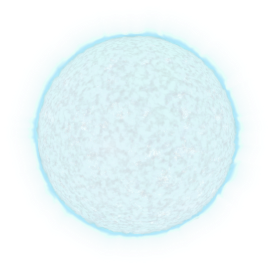
|
| SURFACE TEMP | 7,500 - 10,000 K | |
| COMPOSITION | Strong hydrogen and ionized metals | |
| LUMINOSITY | 5 - 25 | |
| MAGNITUDE | +1 | |
| ABUNDANCE | 0.6% of stars | |
| LIFETIME | 1 billion years | |
| EXAMPLES | Vega, Sirius |
Spectral Class F
Class F stars have strengthening H and K lines of Ca II. Neutral metals (Fe I, Cr I) beginning to gain on ionized metal lines by late F. Their spectra are characterized by the weaker hydrogen lines and ionized metals. Their color is white. About 1 in 33 (3.03%) of the main-sequence stars in the solar neighborhood are class F stars.
Spectral Class G
Class G stars are probably the best known, if only for the reason that the Sun is of this class. They make up about 7.5%, nearly one in thirteen, of the main-sequence stars in the solar neighborhood.
Most notable are the H and K lines of Ca II, which are most prominent at G2. They have even weaker hydrogen lines than F, but along with the ionized metals, they have neutral metals. There is a prominent spike in the G band of CH molecules. G is host to the "Yellow Evolutionary Void". Supergiant stars often swing between O or B (blue) and K or M (red). While they do this, they do not stay for long in the yellow supergiant G classification as this is an extremely unstable place for a supergiant to be.
Spectral Class K
Class K stars are orangish stars that are slightly cooler than the Sun. They make up about 12%, nearly one in eight, of the main-sequence stars in the solar neighborhood. There are also giant K-type stars, which range from hypergiants like RW Cephei, to giants and supergiants, such as Arcturus, whereas orange dwarfs, like Alpha Centauri B, are main-sequence stars.
They have extremely weak hydrogen lines, if they are present at all, and mostly neutral metals (Mn I, Fe I, Si I). By late K, molecular bands of titanium oxide become present. There is a suggestion that K Spectrum stars may potentially increase the chances of life developing on orbiting planets that are within the habitable zone.
Spectral Class M
Class M stars are by far the most common. About 76% of the main-sequence stars in the Solar neighborhood are class M stars. However, because main-sequence stars of spectral class M have such low luminosities, none are bright enough to be visible to see with the unaided eye. The brightest known M-class main-sequence star is M0V Lacaille 8760 at magnitude 6.6 (the fractionally brighter Groombridge 1618 was once considered to be class M0 but is now considered to be as K5) and it is extremely unlikely that any brighter examples will be found.
Although most class M stars are red dwarfs, the class also hosts most giants and some supergiants such as VY Canis Majoris, Antares and Betelgeuse. Furthermore, the late-M group holds hotter brown dwarfs that are above the L spectrum. This is usually in the range of M6.5 to M9.5. The spectrum of a class M star shows lines belonging to oxide molecules, TiO in particular, in the visible and all neutral metals, but absorption lines of hydrogen are usually absent. TiO bands can be strong in class M stars, usually dominating their visible spectrum by about M5. Vanadium monoxide bands become present by late M.
Disclaimer Notice
Page used with permission of USS Wolff CO - granted Nov 1, 2016
Images by Chris Adamek and used with permission from http://sttff.net/
